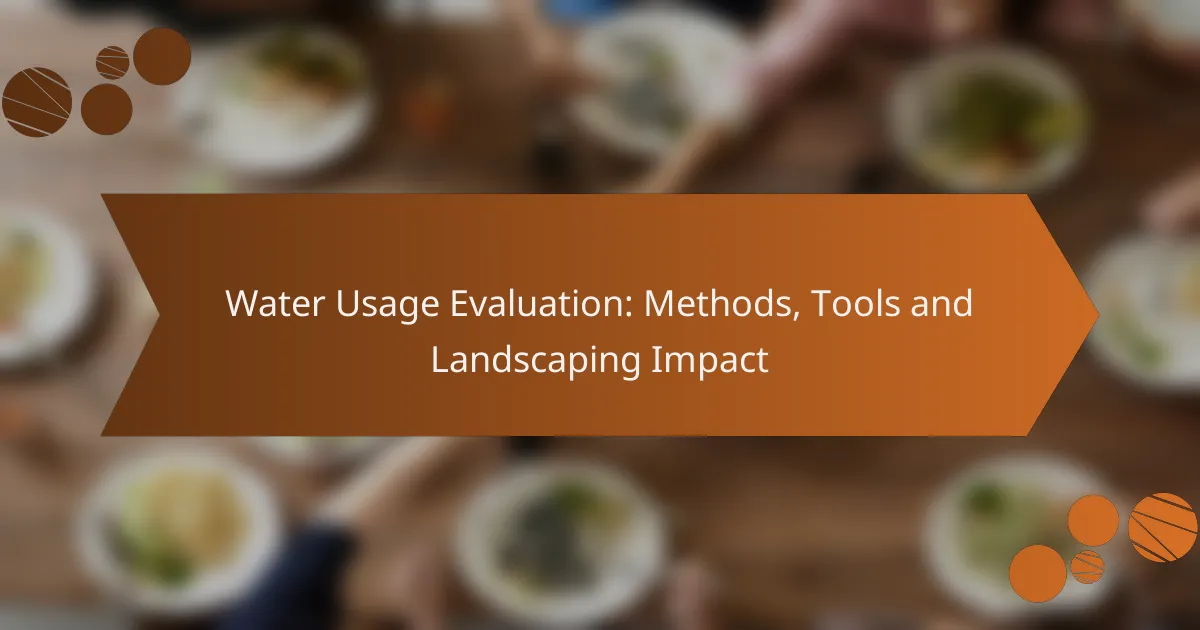Water usage evaluation is essential for optimizing landscaping practices, particularly in water-scarce regions like Los Angeles. By employing methods such as soil moisture sensors and water budgeting, homeowners can enhance their landscapes while conserving resources and ensuring sustainable plant choices.
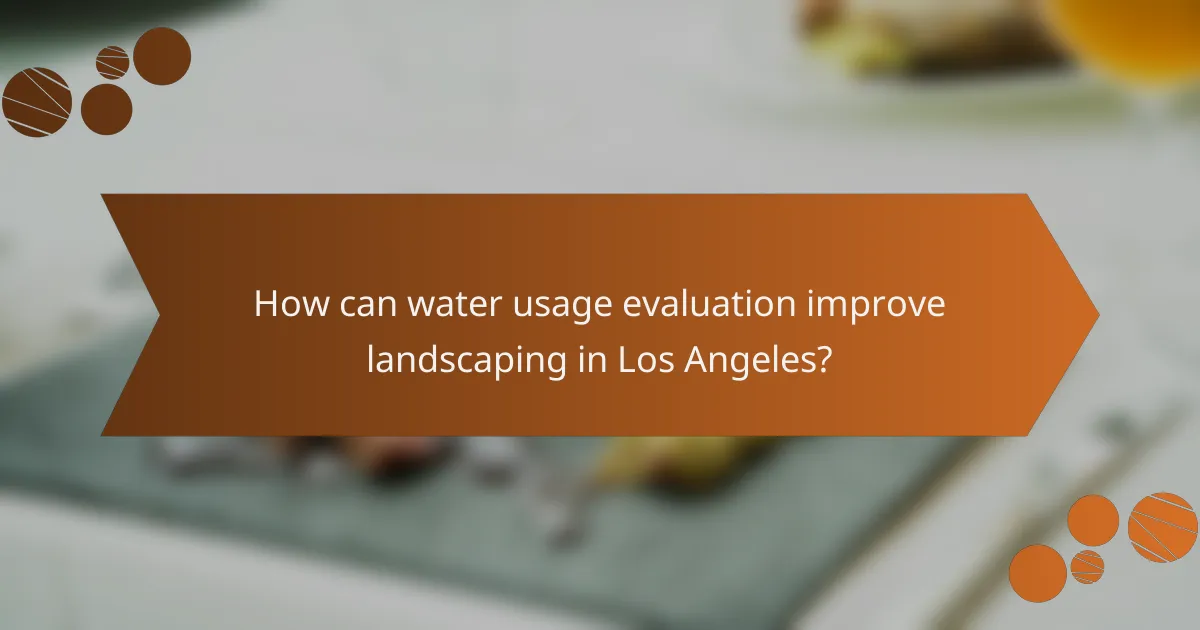
How can water usage evaluation improve landscaping in Los Angeles?
Water usage evaluation can significantly enhance landscaping in Los Angeles by optimizing irrigation practices and promoting sustainable plant choices. By assessing water consumption, homeowners can create more efficient landscapes that conserve resources while maintaining aesthetic appeal.
Reduces water waste
Evaluating water usage helps identify areas where excess water is being applied, allowing for adjustments that minimize waste. For instance, using drip irrigation systems instead of traditional sprinklers can reduce water runoff and evaporation, ensuring that more water reaches the plant roots.
Implementing smart irrigation controllers that adjust watering schedules based on weather conditions can further decrease unnecessary water use. Homeowners can save up to 30% on their water bills by making these changes.
Enhances plant health
Proper water usage evaluation leads to healthier plants by ensuring they receive the right amount of moisture. Overwatering can lead to root rot and other diseases, while underwatering can stress plants and hinder growth.
By monitoring soil moisture levels and adjusting irrigation accordingly, gardeners can promote robust plant health. Native and drought-tolerant plants are particularly well-suited for Los Angeles, as they thrive on less water and require less maintenance.
Increases property value
Landscapes that are well-designed and water-efficient can significantly boost property value in Los Angeles. A beautifully landscaped yard not only enhances curb appeal but also attracts potential buyers who are increasingly interested in sustainable features.
Investing in water-efficient landscaping can yield returns of 100% or more, especially in a market where water conservation is a priority. Features such as xeriscaping, which uses drought-resistant plants, can make a property stand out while reducing long-term water costs.
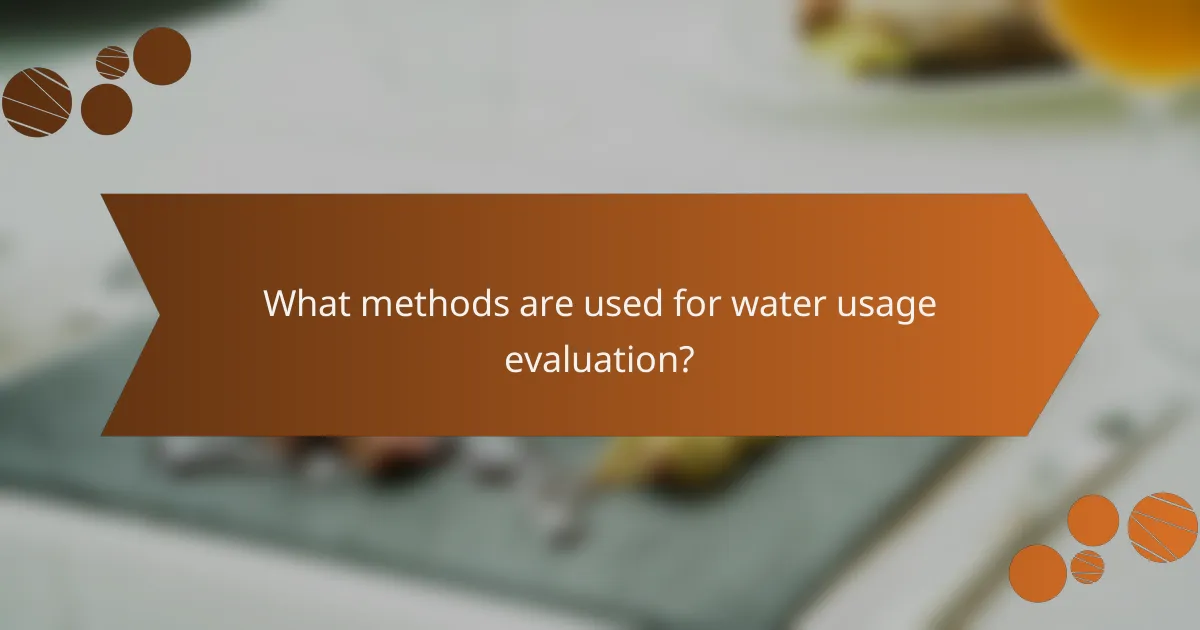
What methods are used for water usage evaluation?
Water usage evaluation employs various methods to assess and manage water consumption effectively. Key techniques include soil moisture sensors, water budgeting, and evapotranspiration calculations, each providing insights into how water is utilized in landscaping and agriculture.
Soil moisture sensors
Soil moisture sensors measure the water content in the soil, providing real-time data on moisture levels. These devices can help determine when to irrigate, reducing water waste and ensuring plants receive adequate hydration.
When using soil moisture sensors, consider the type of sensor (e.g., capacitive or resistive) and its placement in the soil profile. Regular calibration and maintenance are essential for accurate readings. Aim for moisture levels that align with the specific needs of your plants, typically between 20-30% for most garden varieties.
Water budgeting
Water budgeting involves calculating the total water needs of a landscape or agricultural area, taking into account factors like plant types, climate, and soil conditions. This method helps allocate water resources efficiently and can guide irrigation scheduling.
To create a water budget, assess the area’s evapotranspiration rates and the water retention capacity of the soil. A simple approach is to estimate the water requirements based on plant types, which can vary significantly; for example, drought-resistant plants may require less than half the water of traditional varieties. Regularly review and adjust the budget based on seasonal changes and rainfall patterns.
Evapotranspiration calculations
Evapotranspiration (ET) calculations estimate the amount of water lost through evaporation and plant transpiration. Understanding ET is crucial for determining irrigation needs and optimizing water usage in landscaping.
To calculate ET, consider factors such as temperature, humidity, wind speed, and solar radiation. Tools like the Penman-Monteith equation can provide accurate estimates. As a rule of thumb, many regions experience ET rates ranging from 0.5 to 1.5 inches per week during the growing season. Implementing ET-based irrigation schedules can significantly reduce water consumption while maintaining healthy landscapes.
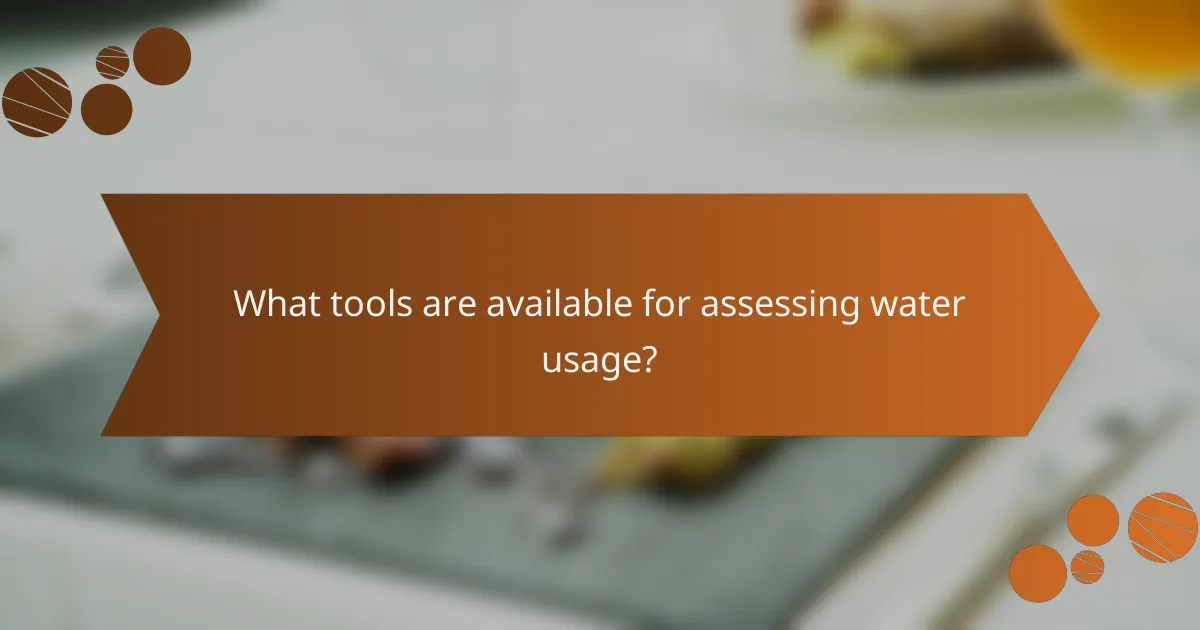
What tools are available for assessing water usage?
Various tools can help evaluate water usage effectively, focusing on efficiency and conservation. These tools range from smart technology to software solutions that provide insights into water consumption patterns and landscape needs.
Smart irrigation controllers
Smart irrigation controllers automatically adjust watering schedules based on real-time weather data and soil moisture levels. These devices can significantly reduce water waste by ensuring that landscapes receive only the necessary amount of water.
When selecting a smart controller, look for features such as weather-based adjustments, remote access via mobile apps, and integration with rain sensors. Many models can save users up to 30% on water bills compared to traditional timers.
Water flow meters
Water flow meters measure the volume of water passing through a specific point in your irrigation system. They provide valuable data on water usage, helping identify leaks or inefficiencies in the system.
Installing a flow meter can help homeowners and landscapers track water consumption accurately. Regular monitoring allows for timely adjustments, potentially saving hundreds of gallons of water annually.
Landscape design software
Landscape design software assists in planning and visualizing outdoor spaces while considering water usage. These tools can help design efficient irrigation layouts and select appropriate plants based on their water needs.
When using landscape design software, consider features that allow for water budgeting and plant selection based on local climate conditions. This approach can lead to sustainable landscaping that minimizes water consumption while enhancing aesthetic appeal.
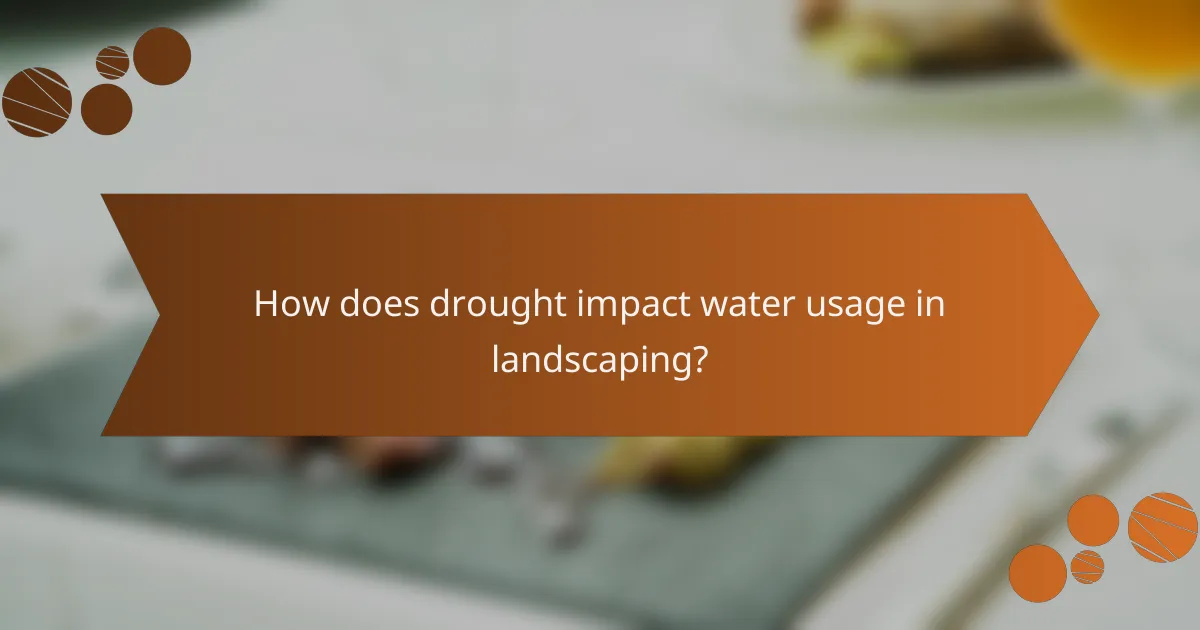
How does drought impact water usage in landscaping?
Drought significantly reduces the availability of water, leading to increased challenges in landscaping maintenance. As water becomes scarce, landscaping practices must adapt to conserve resources while maintaining aesthetic appeal and plant health.
Increased water restrictions
During periods of drought, many regions implement stricter water restrictions to manage limited supplies. These regulations can include limits on watering days, reduced watering hours, and even bans on certain types of irrigation systems.
Homeowners and landscapers must stay informed about local water regulations, as non-compliance can result in fines. It’s advisable to check with local authorities or water management agencies for the latest guidelines and adjust landscaping practices accordingly.
Shift to drought-resistant plants
To cope with reduced water availability, many landscapers are shifting towards drought-resistant plants. These species are adapted to thrive in low-water conditions, requiring significantly less irrigation once established.
Examples of drought-resistant plants include succulents, native grasses, and certain shrubs. When selecting plants, consider local climate conditions and soil types to ensure the best chances of survival and minimal water usage.
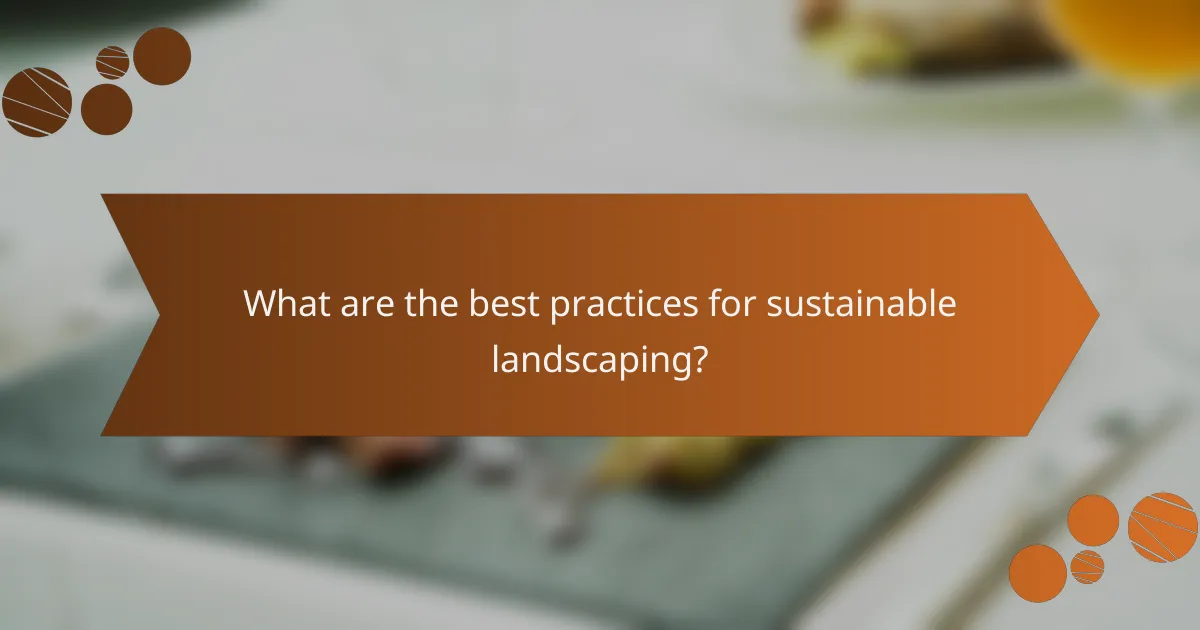
What are the best practices for sustainable landscaping?
Sustainable landscaping focuses on creating outdoor spaces that are environmentally friendly and resource-efficient. Key practices include selecting native plants, implementing rainwater harvesting systems, and minimizing chemical use to promote a healthy ecosystem.
Native plant selection
Choosing native plants is essential for sustainable landscaping as they are adapted to the local climate and soil conditions, requiring less water and maintenance. These plants support local wildlife, including pollinators, and help maintain biodiversity.
When selecting native plants, consider factors such as the specific region, soil type, and sunlight availability. Resources like local nurseries or extension services can provide guidance on suitable species.
Avoid introducing invasive species that can disrupt local ecosystems. Instead, focus on a mix of perennials, shrubs, and trees that thrive in your area.
Rainwater harvesting
Rainwater harvesting involves collecting and storing rainwater for later use, which can significantly reduce water consumption in landscaping. This practice not only conserves water but also helps manage stormwater runoff, reducing erosion and pollution.
To implement rainwater harvesting, install a rain barrel or a larger cistern connected to your roof’s downspouts. Ensure that the system is properly filtered to keep debris out and consider using a pump for distribution.
Check local regulations regarding rainwater collection, as some areas may have specific guidelines or restrictions. Aim to collect enough water to meet a portion of your irrigation needs, especially during dry spells.
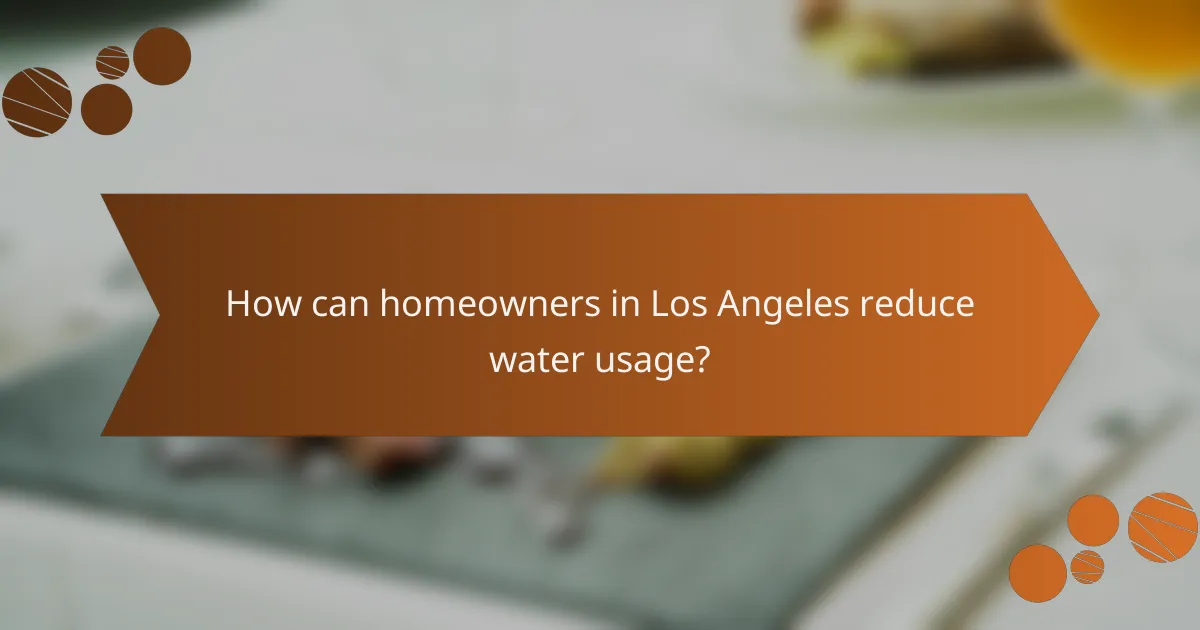
How can homeowners in Los Angeles reduce water usage?
Homeowners in Los Angeles can significantly reduce water usage by adopting efficient landscaping practices and utilizing water-saving technologies. Implementing strategies like xeriscaping can help conserve water while maintaining an attractive outdoor space.
Implement xeriscaping
Xeriscaping is a landscaping method designed to reduce or eliminate the need for irrigation. It involves selecting drought-resistant plants, using mulch to retain moisture, and designing gardens that minimize water loss. This approach is particularly effective in Los Angeles, where water scarcity is a concern.
To successfully implement xeriscaping, start by assessing your current landscape and identifying areas where water is wasted. Replace high-water-use plants with native species that thrive in the local climate. Consider grouping plants with similar water needs together to optimize irrigation.
Common xeriscaping plants for Los Angeles include succulents, lavender, and California poppies. By incorporating these plants, homeowners can reduce their water usage by up to 50% compared to traditional landscaping methods. Regular maintenance, such as pruning and mulching, will further enhance water conservation efforts.
